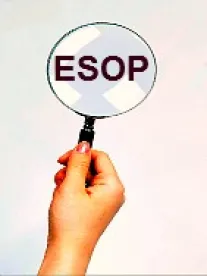Today, Donald Kieffer and Michelle Owen of the Employee Plans branch of the Internal Revenue Service (the "IRS") conducted a Phone Forum focused on the latest issues arising out of the ESOP determination letter process. This article is a summary of some of the items discussed.
1. Introduction - First, Mr. Kieffer gave an overview of the current ESOP program and available resources available on the IRS website (www.irs.gov).
- Currently reviewing Cycle C Form 5300 submissions up to September 2008
- Currently reviewing Form 5310 submissions up to October 2010
Mr. Keiffer said the processing delay is largely due to (1) a shortage of IRS staff qualified to review ESOPs, which are more complicated than other qualified retirement plans, (2) new legislation that added complexity to ESOP documents (such as IRC Section 409(p)), and delay due to seeking necessary technical guidance from the IRS national office.
2. ESOP Technical Guidance Available on IRS Website – The Forum included an overview of the following guidance that is accessible on the IRS website (www.irs.gov):
- Memo 1: Distribution of stock subject to immediate, mandatory resale is consistent with Code Section 409(h).
- Memo 2: Acceptable plan language defining “qualified participant” for diversification requirement of Code 401(a)(28).
- Memo 3: Required timing and content of Section 409(p) amendments, including regulations under 409(p), including language for Section 409(p) transfers.
- Memo 4: “Reshuffling/Rebalancing” memo – acceptability of provisions for mandatory transfer of employer securities and other assets to and from participant plan accounts.
- Memo 5: Issues presented by provisions for mandatory transfer by reshuffling which are designed to prevent the occurrence of a nonallocation year for IRS 409(p) purposes.
3. New Accelerated Processing Procedures – Ms. Owen then gave an overview of the procedures in place to help the IRS process determination letter submissions more quickly.
- Two ESOP cadre members are doing accelerating processing of all applications (not previously assigned) under these new procedures – includes both Forms 5300 and 5310 applications – and the applications generally are being assigned in postmark date order.
- The accelerated contact will be made only on cases where resolution can be made with a single contact (i.e. issues not too complex), otherwise applications will be reassigned to the rest of the ESOP cadre and held in inventory until work is requested by other ESOP cadre members.
4. Recurring Issues on Current Submissions – Ms. Owen discussed issues that are common to many ESOP submissions:
All amendments for Cycle C applications are not being submitted
- Plan document, amendments and/or trust document submitted are signed but not dated
- Plan document, amendments and/or trust document submitted are dated but not signed
- Form 5300 application is not completed in its entirety
- Attachment(s) to line items on application not submitted
- Form 5309 missing
- Language required by the technical guidance is not contained in the plan submission
5. Future Developments – Mr. Keiffer next presented an overview of future developments the IRS is considering including:
- Development of final regulations under Code section 4975 to supersede current regulations initially issued in the 1970’s
- Development of ESOP pre-approved plans program. However, given the cycle of determination letters, Mr. Keiffer felt that implementation could be up to 12 years in the future.
6. Some Additional Q &A –
(a) Mr. Keiffer stated that if a plan was submitted an on-cycle application under 1st 5-year cycle (i.e. Cycle B application submitted by 1/31/08) and you haven’t yet received a determination letter, you must submit an on-cycle application in 2nd 5-year cycle (i.e. Cycle B submission period ending 1/31/13). Indicate in the cover letter the document locator number of the prior pending application.
(b) He also confirmed that a submission on the "old" Form 5300 will not be kicked back to you, but the IRS will ask for the additional information now required on the "new" Form 5300 (April 2011).
(c) He does not like providing a determination letter for plan language that provides a "floor price" in second stage transacitons. He feels is it not a true reflection of value and is based on a hypothetical event, that is, the future benefit distribution.
(d) Plan sponsors and practitioners can get more guidance by sending questions to the IRS at Retirement.Plans.Questions@irs.gov or 877-829-5500.



 />i
/>i
